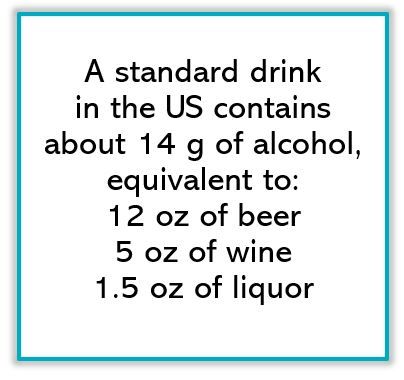- Clinical Technology
- Adult Immunization
- Hepatology
- Pediatric Immunization
- Screening
- Psychiatry
- Allergy
- Women's Health
- Cardiology
- Pediatrics
- Dermatology
- Endocrinology
- Pain Management
- Gastroenterology
- Infectious Disease
- Obesity Medicine
- Rheumatology
- Nephrology
- Neurology
- Pulmonology
Moderate-to-heavy Alcohol Consumption in Young Adulthood May Lead to Early Stroke, Warn New Study Findings
Study authors saw a positive dose-response relationship driven by hemorrhagic stroke in young adults who were moderate-to-heavy drinkers in their 20s and 30s.

People in their 20s and 30s who consumed moderate-to-heavy amounts of alcohol weekly were found more likely to have a stroke in their early adult years than those who did not drink or who drank only low amounts, according to an analysis of a Korean national health database comprised of more than 1.5 million people.
Specifically, the young people who drank 105 g of alcohol per week, or 15 g per day, for 2 years were 19% more likely to have a stroke over approximately 6 years of study follow-up vs light drinkers (HR 1.19, 95% CI 1.05-1.34, P<.001), wrote Eue-Keun Choi, MD, PhD, of Seoul National University in the Republic of Korea, and coauthors in Neurology.
Choi et al report that the risk for stroke rose in parallel with the number of years of moderate-to-heavy drinking in young adulthood. At 3 years, the risk was 22% higher than for light drinkers (HR 1.22, 95% CI 1.09-1.38), and at 4 years 23% higher (HR 1.23, 95% CI 1.10-1.38; both P<.001). These values were calculated following multivariable adjustment for factors including hypertension, smoking, and body mass index.
"Since more than 90% of the burden of stroke overall can be attributed to potentially modifiable risk factors including alcohol consumption, and since stroke in young adults severely impacts both the individual and society by limiting their activities during their most productive years, reducing alcohol consumption should be emphasized in young adults with heavy drinking habits as part of any strategy to prevent stroke," said Choi in an American Academy of Neurology statement.
Choi and colleagues tapped the Korean National Health Insurance Service database for participants, seeking people ages 20 to 29 years who had 4 consecutive annual health exams from 2009 to 2012.

Based on participants’ self-report of alcohol consumption at the exams, the investigators calculated a cumulative alcohol burden score for each by assigning a score of 1 for each year weekly alcohol consumption was reported at ≥105 g. Burden scores ranged from 0 (no years at that level of alcohol consumption) to 4 (4 years with weekly alcohol consumption at ≥105 g.)
The final cohort for assessment numbered 1 536 668 young people of which 71.5% were men. Over a mean follow-up of 5.6 years incident stroke was recorded for 3153 people (incidence rate 0.37 per 1,000 person-years). Both incidence rates and hazard rates increased steadily as cumulative years of moderate-to-heavy drinking increased.
"This positive dose-response relationship was primarily driven by hemorrhagic rather than ischemic stroke," Choi and co-authors wrote. Compared with a cumulative alcohol burden score of 0, the HR for hemorrhagic stroke was 1.30 for a burden score of 2, 1.42 for a score of 3, and 1.36 for a score of 4.
"The proportion of males was overwhelmingly high with high cumulative alcohol burden, reaching approximately 95% in group 4," Choi and co-authors observed. "Mean blood pressure, body mass index, obesity, waist circumference, central obesity, fasting glucose, total cholesterol, and triglyceride levels tended to increase as the cumulative alcohol burden increased."
The study authors note several study limitations, including only Korean participants, limiting the ability to generalize the findings beyond the study population, as well as the self-reported nature of alcohol consumption, creating the risk of recall bias.
Reference: Chung J-W, Lee S-R, Choi E-K, et al. Cumulative alcohol consumption bruden and risk of stroke in young adults: a nationwide population-based study. Neurology. Published online November 2, 2022. doi: 10.1212/WNL.0000000000201473
